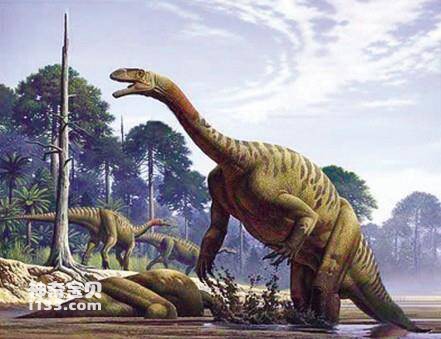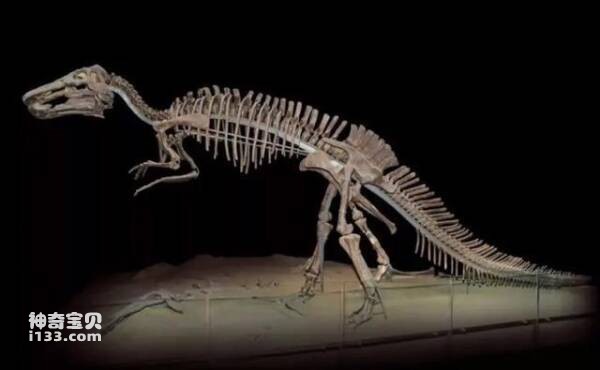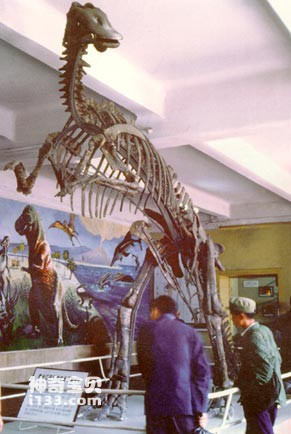China is one of the most important dinosaur producing areas in the world. Dinosaur fossils are found all over the country, and each region is famous for the large number of dinosaur fossils unearthed. But compared with Yunnan, Sichuan, Xinjiang and other dinosaur-producing provinces, Heilongjiang is simply "obscure". But do you know? The earliest scientifically named dinosaur fossil in my country was discovered in Heilongjiang Province, near a small fishing village on the bank of Heilongjiang River. However, this small fishing village is Yuliangzi in Jiayin County.

Manchurian Dragon
Due to the long-term erosion of the Heilongjiang water, the strata along both sides of the river are constantly being denuded, and the dinosaur fossils buried inside are constantly being washed out and exposed on the riverbanks along the river. Local fishermen were surprised when they discovered these fossils because they had never seen such thick animal bones. The news spread quickly and was heard by Russian officers on the other side, who came to investigate and collect fossils. Initially, the Russians mistook the large fossil bones for mammoths and reported them in the local newspaper in Khabarovsk, Russia. Russian geologists were attracted by this report and conducted large-scale inspections and excavations in my country for three consecutive years from 1915 to 1917, and collected a batch of dinosaur fossils. They repaired the collected fossils and equipped them with one-third plaster casts. They mounted the fossils and displayed them in the Petersburg Geological Museum. Research determined that this was a duck-billed dinosaur, 4.5 meters high and about 8 meters long. Russian geologists named it Manchurasaurus.

Most of the Manchusaurus fossils unearthed in Jiayin are dark brown or black in color. They are buried in conglomerate, have a high degree of petrification, are hard in texture, and are dark and shiny. The reason for this situation is probably because the fossil-bearing gravel layer is an oil-bearing layer, so the underground oil has soaked the fossils for a long time.
The hadrosaurus is the younger member of the dinosaur family. It lived in the late Cretaceous period and was a type of vegetarian dinosaur that fed on plants. Their two huge hind legs and long tail form a tripod-like device, enough to support their bulky bodies. Their forelimbs are short and hang freely from the upper body, and can be used to grasp branches and leaves on trees. Its high head has a flat, duck-like mouth with hundreds of small teeth. These teeth are prismatic in shape, with slender roots and are arranged in layers. In this way, when the upper teeth are worn away, the lower teeth will grow in to replace them. Therefore, hadrosaurs had efficient organs for grinding crude fibrous food that could self-repair and renew parts. This may be why they were particularly adapted to the ecological environment of the late Cretaceous, because by the late Cretaceous By that time, the soft ferns on the earth had declined, and the thicker, harder gymnosperms and angiosperms had begun to become the dominant group of vegetation on the earth.

Jiayin County not only unearthed Manchusaurus fossils belonging to the duck-billed dinosaur, but also Ornithomimus fossils and a large number of plant fossils. Research and analysis of this biological community show that the Heilongjiang coast, which is now so cold, had a warm and humid climate with dense and prosperous plants during the late Cretaceous 65 million years ago. The climate conditions were similar to those of modern Hainan Island.
To the deep regret of every Chinese, the first scientifically named dinosaur unearthed in China has not been treasured in China. Fortunately, since the 1970s, Chinese geologists and paleontologists have found new dinosaur fossil sites near that dinosaur and unearthed a new batch of Manchusaurus fossils. These fossils are now displayed in science popularization venues such as the Heilongjiang Provincial Museum and the China University of Geosciences Museum, telling the audience the story of 65 million years ago.
animal tags:
We created this article in conjunction with AI technology, then made sure it was fact-checked and edited by a Animals Top editor.